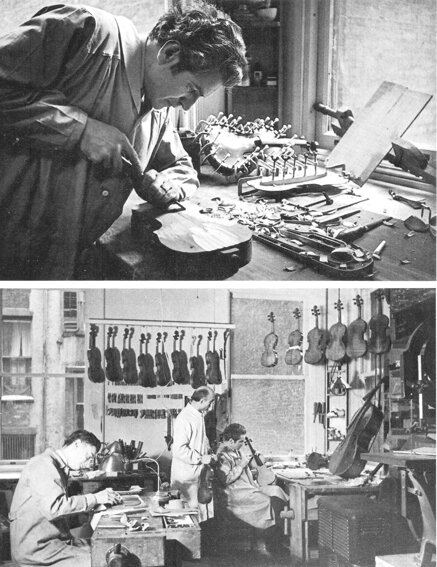© 2024 - In memory of Francesco Bissolotti in the 5th anniversary of his death
The Maestro Sacconi
in the testimony of the violinmaker, restorer and expert
Guillaume Max Möller
Huizen, July 10, 1983
Link: Max Möller
My father and I discovered Sacconi through his work. It was in the 1930's that Zoltan Szekely, a Hungarian violinist living in Holland, came to show us the double Sacconi had made for him of his Stradivarius. I say «double», because «copy» or «imitation» would be too ordinary a way of describing this beautiful violin, which didn't just remind us visually of Stradivarius, but also bore something of his spirit in its craftsmanship. Indeed, some features of his work were clarified by it.
We were both enthusiastic, but I could not have foreseen that only a few years later my bench would be next to Sacconi's.
The great expert Emil Herrmann, established both in Berlin and in New York in those days before the war, had discovered Sacconi and done everything in his power to get him to come first for a brief stage in his atelier in Berlin, and then to work for him in New York. Emil Herrmann needed an assistant for that workshop, and I was extremely proud to be appointed to the position after my training in Mittenwald and Mirecourt, and with Charles Enel in Paris.
Those of that era will recall the «coquettish» little house on 57th Street, the width of one room and with only three stories, plus an attic. Here Emil Herrmann reigned, and every day there was an intense exchange of experiences. On one hand, Herrmann gave Sacconi the opportunity to familiarize himself with a great number of Stradivarius's instruments; and on the other, Sacconi pleased Herrmann by doing such conscientious, exact work in restoration that no one else at the time could match it. This cooperation soon made an expert of Sacconi and gave Herrmann the possibility of offering for sale perfectly restored Stradivariuses. As a young man of twenty-one, I was given the opportunity of following all this. The beautiful thing was the way in which both of them passed on their knowledge and discoveries so generously. In those years Sacconi found out that Stradivarius cut his f-holes from the inside, out, and also what different materials the various makers used for the purfling. In short, it was a period in which our horizons were broadened daily by Sacconi's findings. His knowledge grew so that he was soon to be described as being almost Stradivarius, himself.
In 1937 the Stradivarius bicentennial celebration in Cremona brought us together again after several years that we hadn't seen each other, but the war was to separate our respective professional territories once more. Later, Sacconi went to work for Rembert Wurlitzer and their cooperation, too, turned out to be most fruitful.
I could never forget the times we met together in various parts of the world, mostly in London: often together with Herrmann, once with R. Wurlitzer, and after his death, with his widow and daughter. Sacconi's seventieth-birthday celebration in 1966 brought practically all his students and colleagues together in New York.
I shall always remember how generous and encouraging he was with young people. If one of his students happened to have an idea before he did and he saw that it was good, Sacconi would say from the bottom of his heart, “Bravo!”, with absolutely no envy.
Huizen, July 10, 1983
Taken from the book: «From Violinmaking to Music: The Life and Works of Simone Fernando Sacconi», presented on December 17, 1985 at the Library of Congress in Washington, D.C. (Cremona, ACLAP, first edition 1985, second edition 1986, pages 44-46 - Italian / English).

The Maestro Sacconi at
«Emil Herrmann, Rare Violins» in New York with Max Möller
In the photo above:
Sacconi at the workbench.
In the photo below:
Sacconi (right, seated) and Max Möller
(left, in the foreground, sitting at the workbench).
© 2024 - In memory of Francesco Bissolotti in the 5th anniversary of his death